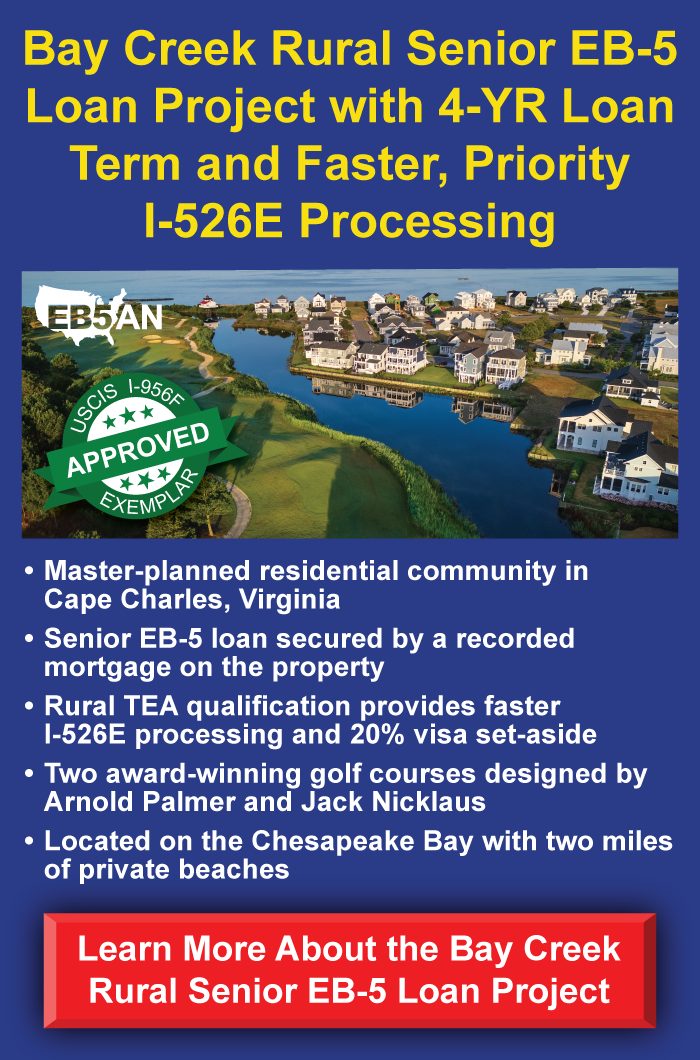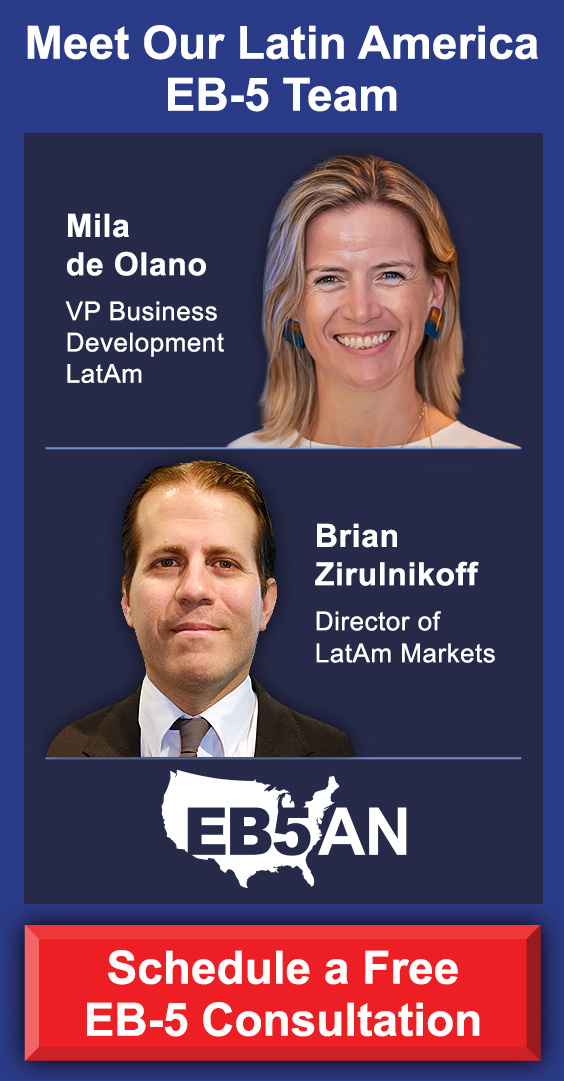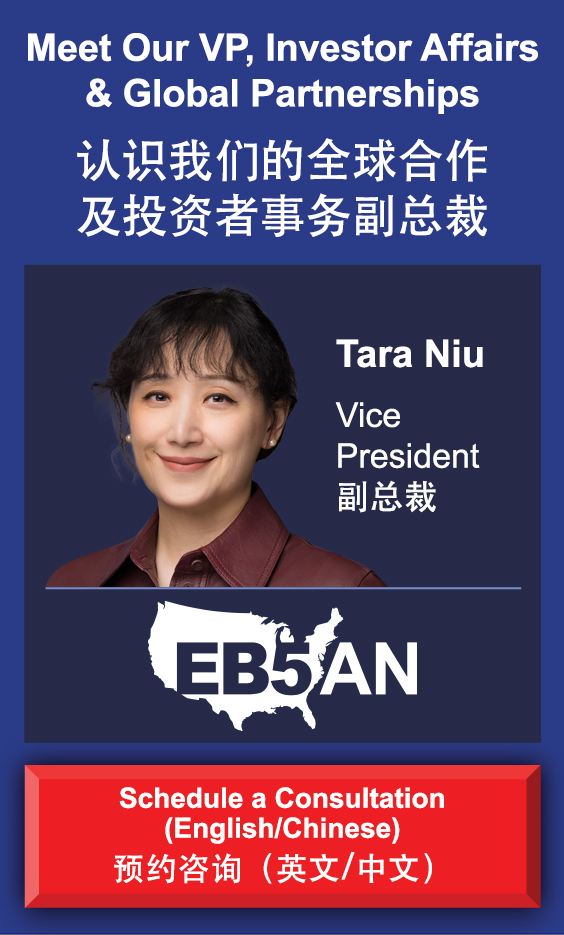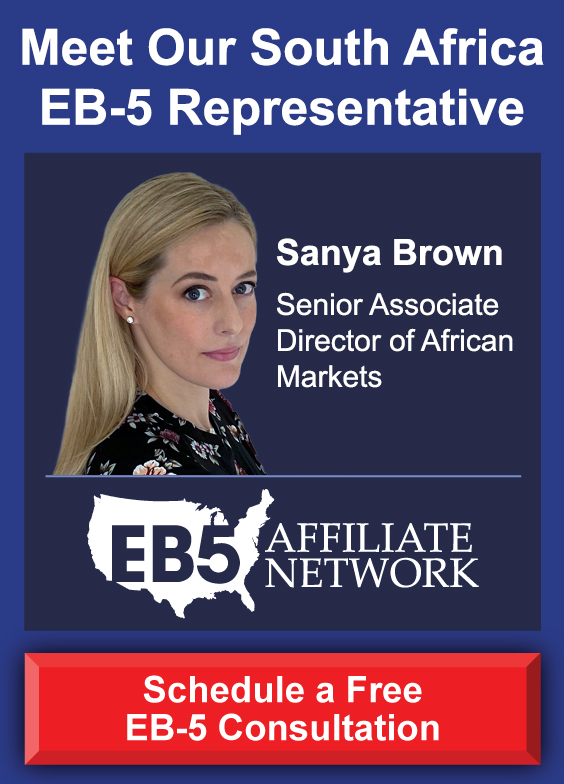It’s a challenging time to be an Indian H-1B visa holder in the United States.
Mass layoffs, dramatic policy shifts, and increased scrutiny of visa applicants have all contributed to high levels of uncertainty for H-1B workers. Many Indian tech professionals in the United States have depended on H-1B visas for long-term career growth and eventual Green Card sponsorship.
The second Trump administration has renewed its focus on restricting immigration and prioritizing U.S. workers. This includes a recent spate of executive orders that are reshaping U.S. immigration policies.
Considering these new executive orders and the potential for additional regulatory changes, H-1B visa holders should proactively explore extension options and visa alternatives.
Fortunately, H-1B workers and their qualified family members have another pathway to lawful permanent residence in the United States. They can lower their immigration risk and get Green Cards through investment via the EB-5 Immigrant Investor Program.
In this article, we’ll explain how you can navigate the H-1B extension process. We’ll also describe the EB-5 visa and why it offers a more stable pathway to permanent residency.
Understanding H-1B Extensions: How Long Can You Stay?
The Impact of the Trump Administration’s Policies on H-1B Extensions
- More Requests for Evidence and Higher Denial Rates
- Additional Scrutiny of H-1B Wage Levels
- Increased Delays, Enforcement, and Costs
Exploring Alternative U.S. Visa Options for H-1B Holders
- L-1 Visa: Intra-Company Transfer
- O-1 Visa: Extraordinary Ability Workers
- The EB-5 Immigrant Investor Program
EB-5: A More Secure Alternative for Employment-Based Immigrants
Explore Your EB-5 Options With EB5AN
Understanding H-1B Extensions: How Long Can You Stay?
The H-1B program is meant to bring in foreign workers to temporarily fill gaps in the U.S. labor force. A foreign national doesn’t get to remain in the United States permanently on an H-1B visa alone. They are approved to live and work in the country for an initial period of three years.
An H-1B holder can extend their visa beyond the initial three-year authorized period for another three years, provided they maintain employment with a sponsoring company.
Employers have filing requirements too. They must submit a new Labor Condition Application (LCA) and Form I-129, Petition for a Nonimmigrant Worker, to United States Citizenship and Immigration Services (USCIS).
It’s important to file an extension petition at least six months before the visa’s current expiration date to avoid a gap in status.
Extending Beyond Six Years: Key Criteria and Pitfalls
In accordance with U.S. immigration law, an approved H-1B holder typically may remain in the United States for up to six years total before returning to their home country or transitioning to another visa category. Any time spent in the United States under an H-1B, H-2, H-3, or L-1 visa also counts toward this six-year limit, but short stays on a tourist visa do not count.
However, there are exceptions to this limit. H-1B visa holders who want to extend their visas beyond the usual maximum of six years should be aware of several options and related considerations.
Extensions Under the American Competitiveness in the 21st Century Act
If an H-1B holder wants to extend their lawful status in the United States beyond six years, they may do so by applying for a Green Card under the American Competitiveness in the 21st Century Act (AC21).
An H-1B holder may extend their visa in one-year increments if they have filed a labor certification application and have an approved Form I-140 immigrant petition. Alternatively, they may extend their visa in three-year increments if they have an approved Form I-140 but are not eligible to apply for a Green Card because of visa backlogs connected to their home country.
Their employer can facilitate the H-1B extension process for the applicant by taking action before their current I-94 expires.
It is essential that all relevant paperwork be timely filed. This involves two main steps.
PERM Labor Certification
Employers must test the U.S. labor market to prove that no qualified American workers are available for the job the foreign national seeks.
This process must be initiated at least 365 days before the H-1B holder reaches their six-year limit to qualify for one-year H-1B extensions while waiting for Green Card processing.
I-140 Immigrant Petition for Alien Worker
Once they receive the PERM approval notice, the sponsoring employer files an I-140 petition with USCIS. If USCIS approves the I-140 but the employee’s priority date is not yet current, they remain stuck in the backlog, unable to apply for a Green Card.
If an H-1B holder has an approved I-140 and a pending Form I-485 that cannot advance because of per-country visa ceilings, they qualify for three-year H-1B extensions. However, this does not guarantee the applicant a Green Card immediately.
Recapturing Time Outside the United States
H-1B holders who have spent significant time outside the United States can apply to “recapture” time from that prior period and extend their visa beyond the six-year limit.
They can do so by documenting their trips abroad, adding up the duration of these trips, and requesting an extension equal to the time they spent outside the United States.
To qualify, each trip must have lasted for at least 24 hours and must have supporting documentation.
For example, if an H-1B worker visited India for a total of nine months over a six-year period, they would apply for a nine-month H-1B extension. This worker would provide documents showing when they departed and returned, how much time they spent overseas, and any other paperwork relevant to the trip.
However, this process requires time, organization, and attention to detail. It is critical to provide supporting documents. The worker must provide passport stamps, flight tickets, and travel records to USCIS to prove they spent the requested time abroad.
Unlike an I-140-based extension, recapturing time provides only a short-term fix.
H-1B Transfer to a New Employer
Changing employers is another option available to H-1B holders.
H-1 workers who change jobs can apply for an H-1B transfer and continue working in the United States. This process is sometimes called H-1B portability. Unlike the initial visa application process, H-1B transfers are not subject to visa ceilings.
Here’s how the transfer process works for an H1B worker who has accepted a new offer of employment.
First, the new employer must file an H-1B transfer petition on behalf of the worker. This entails getting a Labor Condition Application, filing Form I-129 with USCIS, and paying appropriate fees. No lottery is required. Since H-1B transfers are visa cap-exempt, the worker does not have to go through the annual lottery again.
The employee can start working immediately. If the new employer files the transfer before the current H-1B visa expires, the worker can start working as soon as USCIS receives the petition, per H-1B portability rules.
However, this approach comes with some challenges and risks. For example, the Trump administration has increased requests for evidence and denials for H-1B transfers. This makes approvals more difficult to obtain. In addition, if the worker has already hit the six-year limit, the new employer must secure a PERM/I-140 approval for further extensions.
The Impact of the Trump Administration’s Policies on H-1B Extensions
As previously mentioned, H-1B visa holders face heightened uncertainty in securing extensions following the White House’s issuance of new immigration-related executive orders.
Some immigration-related policies from Trump’s first term were reversed. However, some are likely to remain in place or resurface with even stricter restrictions.
Foreign nationals shouldn’t be surprised to see measures like the following that increase risks for H-1B holders.
More Requests for Evidence and Higher Denial Rates
The White House’s policies may extend processing times by compelling USCIS to further emphasize applicant vetting over approvals.
USCIS issues an RFE when it has doubts or questions about aspects of a petition. A delay or denial often follows, as the applicant attempts to respond to USCIS satisfactorily.
Under Trump’s first term, the number of RFEs and denials of H-1B extensions skyrocketed. Renewals became harder to obtain. This trend is expected to continue during Trump’s second term.
Commonly stated rationales for RFEs include employer-employee relationship scrutiny or specialty occupation challenges.
For example, a senior software engineer at an AI startup might apply for an H-1B extension. Despite the applicant holding a master’s degree and earning $150,000 per year, USCIS issues an RFE questioning whether their job meets the specialty occupation requirement. This delays their extension request by six months.
This is just one of many possible examples of how an H-1B extension request can go wrong.
Additional Scrutiny of H-1B Wage Levels
The Trump administration proposed increasing prevailing wage levels, making it harder for some H-1B holders to qualify for extensions.
Such extension requests could be denied if an offered salary does not meet new wage requirements. Some companies will hesitate to sponsor extensions if they must pay higher wages.
Lower-wage and less experienced H-1B workers would face the greatest risk under such rules.
Increased Delays, Enforcement, and Costs
H-1B extensions have already been subjected to significant delays.
Several factors may contribute to these delays. These include tightened adjudication standards, USCIS workforce layoffs, and stricter travel restrictions for selected countries.
In addition, stricter enforcement of immigration laws, heavier security screening procedures, and increased audits of employers suspected of unauthorized employment practices may compound waiting times.
Premium processing costs have also increased for H-1B applicants who want to receive a decision faster.
All of these recent and potential developments may add up to significant adverse effects on H-1B holders. They might face longer gaps in employment. If an H-1B extension isn’t processed in time, workers may need to stop working while they wait for a decision.
Exploring Alternative U.S. Visa Options for H-1B Holders
Fortunately, H-1B holders have other visa options. Some of the most popular of these follow.
L-1 Visa: Intra-Company Transfer
The L-1 visa is suitable for an H-1B holder who works for a multinational company in a managerial, executive, or specialized capacity.
Keep in mind that relocation outside of the United States for at least a year is required before an applicant can apply for this visa. The multinational company would then have to transfer the employee from its foreign office to work in an affiliated office in the United States.
Another downside of this option is decreased flexibility. If you do not stay with the same employer, your Green Card process will reset.
O-1 Visa: Extraordinary Ability Workers
The O-1 visa requires that an applicant prove exceptional achievements in the arts, athletics, business, entertainment, or the sciences.
Examples of this include winning a major coding competition or holding notable patents. Proof of either of these would constitute strong supporting documentation for an O-1 petition.
A downside of this option is that it’s very difficult to qualify without documented awards, publications, or significant industry recognition. The O-1 visa also does not provide a Green Card, but this visa can be a steppingstone toward one.
The EB-5 Immigrant Investor Program
Congress created the EB-5 Immigrant Investor Program in 1990 to promote economic growth and domestic job creation through foreign investment.
The program grants direct Green Card access without the applicant having to depend on employer sponsorship, H-1B extensions, or a lottery. This is a powerful advantage. Foreign nationals can gain U.S. lawful permanent residency in a timely manner by making a qualifying investment.
Let’s take a closer look at what this program involves and why H-1B holders should strongly consider it.
EB-5: A More Secure Alternative for Employment-Based Immigrants
The EB-5 program provides Green Cards to foreign investors who fulfill program criteria. Usually, a foreign national invests at least $1,050,000 in a U.S. business called a new commercial enterprise to qualify. Those who choose projects located in targeted employment areas (TEAs) are eligible for a reduced cost of $800,000.
This investment must create a minimum of 10 full-time jobs for American workers. The jobs must last for at least two years. In exchange, the foreign national and qualified family members will receive Green Cards.
The overwhelming majority of investors do this by partnering with regional centers, which take care of most management responsibilities. The regional center approach also offers easier job creation requirements and the assistance of professional staff.
This is a desirable choice for an H-1B professional who seeks a straightforward path to permanent residency in the United States for themselves, their spouse, and unmarried children under the age of 21.
Advantages of EB-5 Over H-1B
An H-1B visa holder’s immigration status depends on their job. A fired H-1B worker must generally identify a new employment sponsor soon. Otherwise, their H-1B visa status and related work authorization will automatically terminate, and they will have to depart the United States within 30 days.
However, under the EB-5 program, a foreign national has more control over their immigration status. They don’t need to deal with an employer’s approval, sponsorship, or audit.
Unlike H-1B holders, who are restricted to specific employers, job duties, and places, EB-5 visa holders are U.S. permanent residents who enjoy numerous benefits. They can:
- Live anywhere in the country with eligible family members.
- Work in almost any industry.
- Receive employment authorization for themselves and family members while their Green Card application is being processed.
- Negotiate better salaries than other foreign workers.
- Retire or start a business without having to deal with visa renewals.
A foreign national who receives a Green Card under the EB-5 program will maintain long-term residency even if their employment changes. Typically, immigration policy changes also do not affect EB-5 visa holders as much as other visa categories.
Sometimes H-1B holders who apply for EB-2 or EB-3 visas must wait for decades before they receive their Green Cards.
However, the EB-5 program offers a quicker path to lawful permanent residency. In many cases, EB-5 applicants who work with the right team can finish all the steps to acquire a Green Card in under a year.
Explore Your EB-5 Options With EB5AN
Qualified Indian H-1B visa holders who want a reliable pathway to lawful permanent residency in the United States should strongly consider applying to the EB-5 program.
If you’re an H-1B worker looking to extend your stay in the United States, it’s advisable to get in touch with a reputable EB-5 consulting firm. This kind of partnership will give you the best odds of obtaining Green Cards for yourself and your family members. And be sure to consult with an experienced immigration attorney.
EB5AN has helped more than 2,300 families from 70+ countries become lawful permanent residents of the United States. Our expert team has more than a decade of experience, and offers clients first-rate, low-risk EB-5 regional center projects with a 100% USCIS project approval rate to date.
Book a free call with us today to learn more about the EB-5 program and how EB5AN can help.












